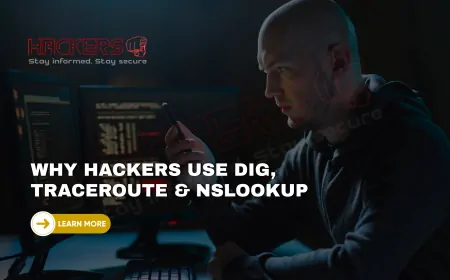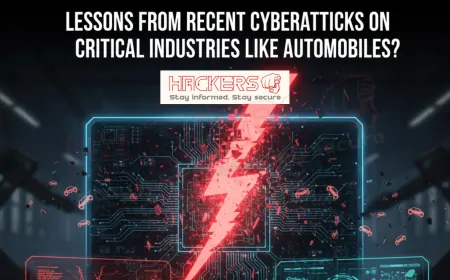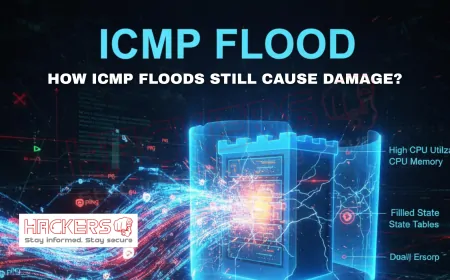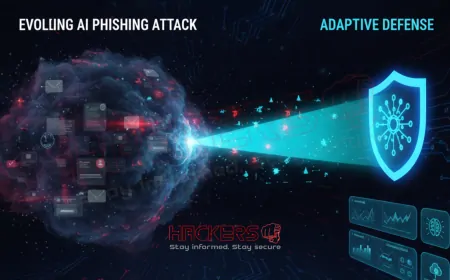How to Build a Portfolio That Wins Cybersecurity Awards
You are staring at the nomination form for the Cybersecurity Excellence Awards, and one line stops you cold: “Submit your portfolio of achievements.” Your heart sinks. You have patched servers at 3 a.m., stopped ransomware in its tracks, and taught your team how to spot phishing emails. But where is the proof? In 2025, with over 1,500 cybersecurity awards handed out globally, a strong portfolio is your golden ticket. It is not just a folder of documents. It is a story of impact, told with evidence, that turns judges from skeptics to supporters. Whether you are a solo security analyst, a startup founder, or a student hacker, this guide shows you how to build a portfolio that wins. From capturing daily wins to crafting case studies that shine, we cover every step. By the end, you will have a system to turn routine work into award-worthy proof. Think of it as your personal highlight reel, ready to impress at RSA, SC Awards, or Globee. Let’s turn your quiet victories into loud applause.
Table of Contents
- Introduction
- Why a Strong Portfolio Wins Awards
- The Core Elements of a Winning Portfolio
- Daily Habits to Build Your Portfolio
- How to Write Case Studies That Stand Out
- Using Visuals and Data to Prove Impact
- Building Portfolios for Teams vs Individuals
- Special Tips for Students and Early-Career Pros
- Portfolio Component Checklist Table
- Tools and Templates to Get Started
- Common Pitfalls and How to Avoid Them
- Conclusion
- Frequently Asked Questions
Why a Strong Portfolio Wins Awards
Awards are not about who shouts loudest. They are about who proves best. In 2025, judges for programs like the RSA Innovation Sandbox or Cybersecurity Breakthrough Awards receive 500 to 2,000 entries. They spend less than 10 minutes on each. A weak portfolio gets skipped. A strong one gets shortlisted.
- Trust Signal: Evidence beats claims. “Reduced threats by 70 percent” with a graph beats “We are innovative.”
- Storytelling Power: A portfolio turns dry facts into a hero’s journey: problem, action, result.
- Judging Fit: Most awards score on impact (40 percent), innovation (30 percent), leadership (20 percent), scalability (10 percent). Your portfolio must hit all.
- Reusable Asset: One portfolio works for awards, job apps, promotions, and sales decks.
For beginners, think of your portfolio as a scrapbook of wins. Start small. Every saved incident, every trained colleague, every patched vulnerability is a page. Over time, it becomes a book judges cannot put down. In 2025, when AI tools flood the market, real human impact wins hearts. Your portfolio proves you deliver.
The Core Elements of a Winning Portfolio
A great portfolio has five pillars. Miss one, and your entry wobbles.
- Executive Summary (1 page): Who you are, your role, and your top 3 achievements in 150 words.
- Case Studies (3–5): Detailed stories of problems solved, with before/after metrics.
- Metrics Dashboard: Graphs showing threat reduction, response time, cost savings.
- Testimonials: Quotes from clients, managers, or peers. “Your training stopped a $2M breach.”
- Supporting Docs: Certs (CISSP, CEH), publications, speaking gigs, open-source contributions.
Format matters. Use PDF for submissions, with a clean design: headers, bullet points, bold metrics. In 2025, judges love interactive elements: clickable links to demos or GitHub repos. Keep it under 20 pages. Quality over quantity. One startup won the Globee Award with a 12-page portfolio that told three perfect stories. Less is more when every word counts.
Daily Habits to Build Your Portfolio
Waiting until nomination season is too late. Build daily. It takes 10 minutes a day but pays off for years.
- Log Wins Weekly: Every Friday, note one achievement. “Blocked 50 phishing attempts.” Use a simple Google Doc.
- Screenshot Proof: Before/after dashboards, alert logs, patched systems. Blur sensitive data.
- Ask for Feedback: After every project, email stakeholders: “What worked well?” Save replies.
- Track Metrics: Use Excel to log response time, detection rate, training hours delivered.
- Contribute Publicly: Write a blog post, answer Stack Overflow, push to GitHub. Linkable proof.
A junior analyst started this in January 2025. By October, she had 40 entries. She turned three into case studies and won the (ISC)² Rising Star Award. Habits compound. Start today, and your portfolio writes itself.
How to Write Case Studies That Stand Out
Case studies are your portfolio’s heart. Follow the STAR method: Situation, Task, Action, Result.
Example Structure:
- Title: “Stopped Ransomware in 18 Minutes at a 500-Employee Firm”
- Situation: “Client received phishing email; 10 devices infected.”
- Task: “Contain, eradicate, recover without paying ransom.”
- Action: “Isolated network, deployed EDR tool, restored from backup.”
- Result: “Zero data loss, $1.2M ransom avoided, client renewed contract.”
Tips for impact:
- Quantify Everything: Dollars saved, minutes shaved, users protected.
- Use Client Voice: Include a quote: “Your team saved our reputation.”
- Add Visuals: Timeline graphic, before/after threat map.
- Keep It Short: 300–500 words. One page max.
In 2025, judges skim. Bold your metrics. One CISO won the SC Award with a case study titled “Cut Breach Cost from $4.5M to $120K.” The number did the talking.
Using Visuals and Data to Prove Impact
Judges are visual. A graph beats a paragraph. Use free tools to turn data into proof.
- Charts: Line graph of threat detection rate over 6 months (Google Sheets).
- Screenshots: SIEM dashboard before/after your fix (redact IPs).
- Infographics: Canva template: “90 percent faster response time.”
- Video Demo (optional): 60-second Loom walkthrough of your tool in action.
A student won picoCTF with a portfolio featuring a heat map of vulnerabilities found during a bug bounty. No jargon. Just color-coded proof. In 2025, with AI summarizing entries, visuals make you memorable. Aim for one visual per case study.
Building Portfolios for Teams vs Individuals
Team and solo portfolios differ but share DNA.
- Individual: Focus on your role. “I led the incident response.” Use “I” sparingly; emphasize impact.
- Team: Highlight collective wins. “Our SOC reduced MTTD by 65 percent.” Credit contributors.
- Hybrid: For managers, show leadership: “Trained 20 analysts; 3 promoted.”
A startup team won the RSA Sandbox with a portfolio titled “From 0 to 100 Enterprise Clients in 18 Months.” Each member had a mini-case study. Judges loved the cohesion. For individuals, tie team wins to your contribution. Balance “we” and “I” like a pro.
Special Tips for Students and Early-Career Pros
No job? No problem. Students win big with creativity.
- CTF Wins: Screenshot your picoCTF leaderboard rank. Link to write-ups.
- Research Papers: Publish on arXiv or school journal. Cite in portfolio.
- Volunteer Work: Helped a nonprofit secure their site? Document it.
- Certifications: CompTIA Security+, Google Cybersecurity Certificate. Include badges.
- GitHub Projects: Build a phishing simulator. 100 stars = proof.
A high schooler won CyberPatriot nationals with a portfolio of club training sessions and a homemade SIEM dashboard. Judges said, “This kid thinks like a pro.” Start early. Your portfolio grows with you.
Portfolio Component Checklist Table
| Component | Must-Have | Nice-to-Have | Format |
|---|---|---|---|
| Executive Summary | Yes | Video intro | 1-page PDF |
| Case Studies | 3–5 | Client logo | 1 page each |
| Metrics Dashboard | Yes | Interactive | Graph PNG |
| Testimonials | 2–3 | Video quote | Quote + photo |
| Supporting Docs | Certs | Media clips | PDF links |
Tools and Templates to Get Started
No design skills? No problem. Free tools make you look pro.
- Canva: Award portfolio templates. Drag, drop, done.
- Google Docs: Collaborative case study drafting.
- Loom: 2-minute video walkthroughs.
- Tableau Public: Free interactive dashboards.
- Notion: Personal portfolio wiki to track everything.
Download a free template from Cybersecurity Excellence Awards site. Swap in your data. Done in an hour. In 2025, judges see hundreds of entries. A clean, branded look (your logo, consistent colors) makes you memorable.
Common Pitfalls and How to Avoid Them
Even strong pros trip. Avoid these:
- Too Much Jargon: Explain “EDR” as “automated threat hunter.”
- No Metrics: “Improved security” fails. “Cut alerts by 82 percent” wins.
- Generic Claims: “Industry leader” means nothing. Name the award.
- Overloading: 50 pages? Judges stop at 10. Curate ruthlessly.
- No Story: Facts without narrative bore. Use STAR.
A 2025 finalist lost for a 45-page deck. The winner? 8 pages, 3 stories, bold numbers. Edit like your career depends on it. It does.
Conclusion
Building a portfolio that wins cybersecurity awards is not a one-time task. It is a habit, a system, a career strategy. Start today: log one win, draft one case study, save one screenshot. In six months, you will have a weapon that opens doors to awards, jobs, and respect. From students to CISOs, the formula is the same: prove impact with evidence, tell it clearly, package it beautifully. In a noisy 2025 cyber world, your portfolio is your voice. Make it loud, make it proud, and watch the awards follow.
Frequently Asked Questions
Do I need a job to build a portfolio?
No. Students use CTFs, GitHub, and volunteer work. Start with what you have.
How many case studies should I include?
3 to 5. Quality over quantity. One perfect story beats ten weak ones.
Can I use client names in my portfolio?
Only with permission. Use “Fortune 500 Bank” if NDAs apply.
What if I do not have metrics?
Estimate conservatively. “Likely saved $500K in downtime” with reasoning.
Should I include certifications?
Yes. Screenshots of badges (CISSP, CEH) add credibility.
How long should my portfolio be?
10 to 20 pages max. Judges skim. Make every page count.
Can I reuse my portfolio for job applications?
Absolutely. Tailor the summary, keep the case studies.
Do awards care about open-source work?
Yes. Link to GitHub repos with 50+ stars. It is public proof.
What if I work in a team?
Highlight your role. “I designed the detection rule that blocked 1,000 attacks.”
Are visuals required?
Not required, but they boost impact. One graph can replace 200 words.
How often should I update my portfolio?
Quarterly. Add new wins, remove outdated ones.
Can I include speaking engagements?
Yes. Photos, slides, and attendee feedback strengthen leadership claims.
What file format is best?
PDF for submissions. Interactive HTML for personal sites.
Do judges read every word?
No. Bold metrics, use headers, keep paragraphs under 4 lines.
Can I hire someone to build my portfolio?
You can, but authenticity matters. Write your own case studies.
Are student portfolios judged differently?
Yes. Focus on potential. A strong CTF write-up can beat years of experience.
How do I get testimonials?
Ask after every project. “Mind sharing a quick quote on LinkedIn?”
Should I password-protect my portfolio?
Yes for sensitive data. Share a clean version for awards.
Can I submit the same portfolio to multiple awards?
Yes, but tweak the summary to match each award’s focus.
What is the biggest portfolio mistake?
No metrics. Always quantify: time, money, threats stopped.
What's Your Reaction?




























































